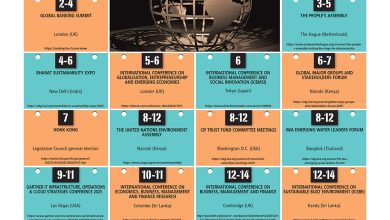NEW FRONTIERS
Fazmina Imamudeen explores our wacky and wonderful world

DIGITAL HISTORY In 2039, the world will commemorate the 100th anniversary of World War II, and the Imperial War Museum (IWM) and its Head of ICT Ian Crawford and his team are gearing up for this significant milestone.
This work involves converting some 24,000 hours of film and video, and 11 million photographs, into digital formats to preserve them for posterity.
The museum uses Linear Tape-Open (LTO) systems for long-term data storage with each tape capable of holding up to 18 terabytes of data. This method is reliable and cost-effective but has limitations, which includes a lifespan of about 15 years and strict temperature protocols.
Innovative alternatives to magnetic tape storage are being developed. UK startup HoloMem uses lasers to create holograms in polymer so that data can be stored in multiple layers and withstand extreme temperatures.
Meanwhile, Microsoft Research’s Project Silica is using lasers to store data in glass, which is durable and can potentially last for thousands of years.
IWM is also exploring AI to help catalogue its vast digital library and enhance the value of preserved data by enabling efficient data analytics. This will ensure that historical data is effectively managed and utilised, for future research and analysis.
POWERHOUSE MIX Concrete, which is a ubiquitous building material, may hold the key to powering our homes.
At a lab in Cambridge, Massachusetts, research scientist Dr. Damian Stefaniuk and his team at MIT have developed a ‘supercapacitor’ made by mixing water, cement and carbon black. It offers a potential solution to energy storage needs.
Unlike batteries, supercapacitors charge rapidly and promise minimal performance degradation. While existing versions discharge quickly and are less suitable for steady energy output, Stefaniuk’s carbon cement supercapacitor could revolutionise renewable energy storage.
By harnessing the conductive properties of carbon black, this supercapacitor can quickly accumulate large amounts of charge, making it ideal for storing excess energy from intermittent renewable sources such as wind and solar power.
This innovation could alleviate pressure on national grids during periods of low renewable energy production.
Challenges remain, however; they include optimisation of the mix of materials for structural integrity and the environmental impact of cement production. nevertheless, experts see great potential in this technology, and envision a future where buildings and infrastructure double as energy storage systems, while aiming for cleaner and more sustainable lifestyles.
TAPPING THE AIR When a severe drought struck Kozhikode in 2016, Swapnil Shrivastav and his fellow residents faced strict water rationing. This pushed him to find an innovative solution.
Inspired by a device from the Star Wars franchise, he co-founded Uravu Labs in 2019. The Indian startup develops atmospheric water generators that convert air into water using liquid desiccants. Powered by renewable energy, these units produce around 2,000 litres of drinking water in 12 hours.
Despite its potential, scaling the technology has proven financially challenging. Currently, Uravu supplies water to the hospitality sector instead of communities in need, due to cost constraints and lack of funding.
Globally, water scarcity is intensifying with more than half of the world’s people facing regular shortages. Atmospheric water generation, valued at US$ 3.4 billion in 2022, is expected to grow to 13.5 billion dollars by 2032. The technology, which employs cooling condensation or desiccant based methods, offers a sustainable water source without traditional infrastructure.
Other startups such as Majik Water in Kenya also use atmospheric H2O generation to tackle water scarcity although costs remain a barrier to progress. Innovations in material science and energy efficiency, along with potential governmental support, could enhance the viability and adoption of these systems.
Uravu Labs is exploring new materials and waste heat utilisation, to improve efficiency and reduce costs, while aiming for broader application in data centres.
WASTE TO WEALTH Rukmini Baburao Kumbhar, a member of a spiritual group in Maharashtra, collects cow dung daily to produce biomethane for the ashram’s kitchen. Despite the initial hesitation of guests, this initiative replaces natural gas consumption and showcases the potential of biogas as a sustainable source of energy.
Across India, biogas plants are transforming agricultural waste into methane while addressing energy demands and reducing pollution. Government incentives such as blending biomethane with natural gas aim to promote its adoption and reduce gas imports.
In Ludhiana, Punjab, a large biogas reactor mitigates river pollution by processing cow dung from dairy production. Initially met with scepticism, the value of waste collection has become evident and provides income opportunities for farmers.
Entrepreneurs are capitalising on the biogas market and employing hundreds to collect farming waste for processing. Challenges remain however, particularly in urban areas, due to space limitations, concerns about odour and cost barriers in rural communities.





